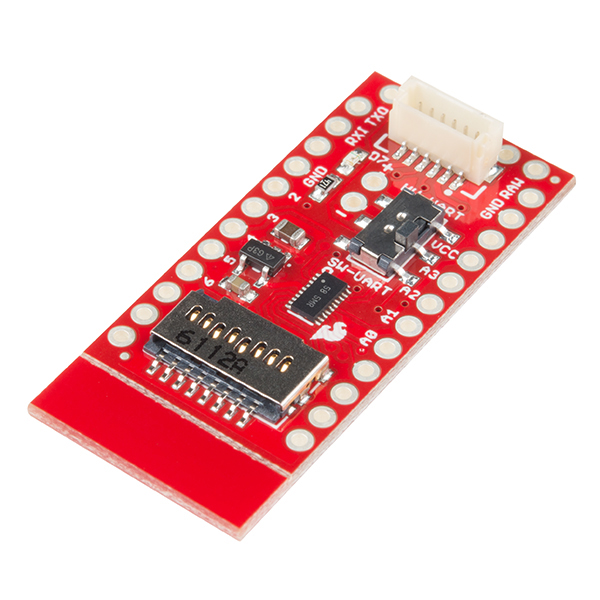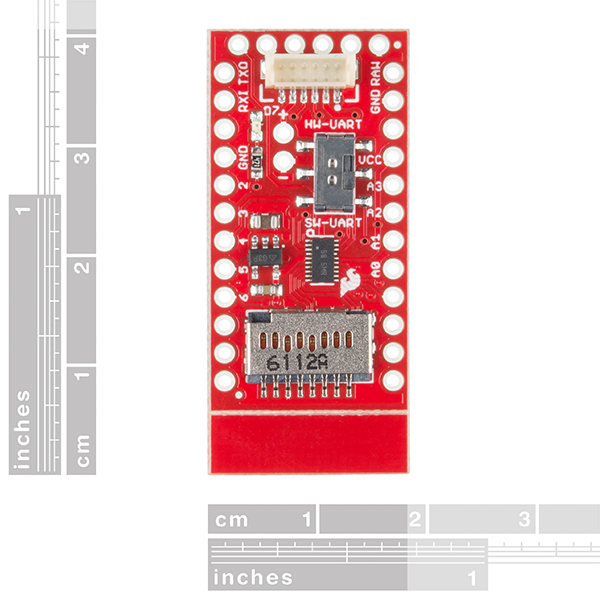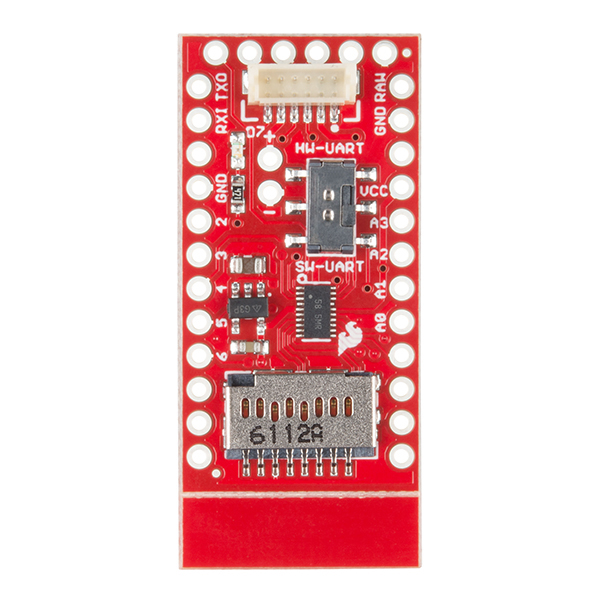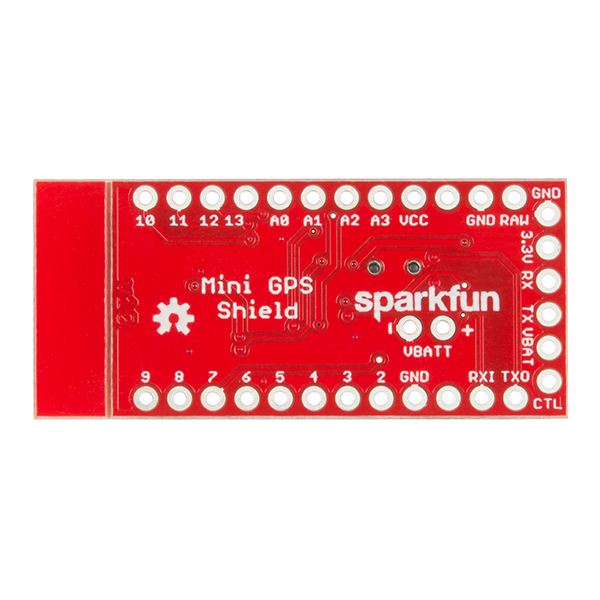SparkFun Mini GPS Shield
The SparkFun Mini GPS Shield equips your Arduino Mini with access to a GPS module, µSD memory card socket and all of the other peripherals you'll need to turn your Arduino into a position-tracking, speed-monitoring, altitude-observing wonder logger. The shield is based around the GP-735 GPS module, a 56-channel GPS receiver featuring a uBlox 7th generation chip set and an up to 10Hz update rate. The board also uses a level shifter, so there’s no need to worry about the logic voltage of your Arduino Mini.
The Mini GPS Shield is a mini version of our GPS Logger Shield. While the GPS Logger Shield was designed to work with the Arduino RedBoard, the Mini GPS Shield was designed to work with the Arduino Mini/Micro boards.
The shield comes with a 6-pin JST connector to connect the GP-735 module. If you already have a GPS module, the JST pins are broken out and labeled to allow you to use just about any GPS module that works down to 3.3V. The Mini GPS Shield will work with any of our Arduino Mini boards. The board uses 3.3V logic; however, the logic level converter on the shield allows you to use 5V boards just as easily. The mini boards have symmetrical pins, which means it’s very easy to plug the shield in the wrong way. Plugging the shield in backward won’t damage either board, but it is something that could be easy to overlook. Make sure to check out the Hookup Guide below for proper installation instructions.
- Supports GP-735 with pins broken out to support most 3.3V tolerant GPS modules
- Supports backup battery options
- uSD memory card socket
- Works with any Arduino Mini board (3.3V or 5V)
- UART switch controls serial communications
- Configurable LED to show GPS fix
SparkFun Mini GPS Shield Product Help and Resources
Core Skill: Soldering
This skill defines how difficult the soldering is on a particular product. It might be a couple simple solder joints, or require special reflow tools.
Skill Level: Noob - Some basic soldering is required, but it is limited to a just a few pins, basic through-hole soldering, and couple (if any) polarized components. A basic soldering iron is all you should need.
See all skill levels
Core Skill: Programming
If a board needs code or communicates somehow, you're going to need to know how to program or interface with it. The programming skill is all about communication and code.
Skill Level: Rookie - You will need a better fundamental understand of what code is, and how it works. You will be using beginner-level software and development tools like Arduino. You will be dealing directly with code, but numerous examples and libraries are available. Sensors or shields will communicate with serial or TTL.
See all skill levels
Core Skill: Electrical Prototyping
If it requires power, you need to know how much, what all the pins do, and how to hook it up. You may need to reference datasheets, schematics, and know the ins and outs of electronics.
Skill Level: Competent - You will be required to reference a datasheet or schematic to know how to use a component. Your knowledge of a datasheet will only require basic features like power requirements, pinouts, or communications type. Also, you may need a power supply that?s greater than 12V or more than 1A worth of current.
See all skill levels
Comments
Looking for answers to technical questions?
We welcome your comments and suggestions below. However, if you are looking for solutions to technical questions please see our Technical Assistance page.
Customer Reviews
No reviews yet.





That's a darned misleading way you advertised this. How about "GPS NOT included"? What a pain.
Can I use this shield with the Fio v3?